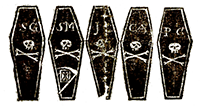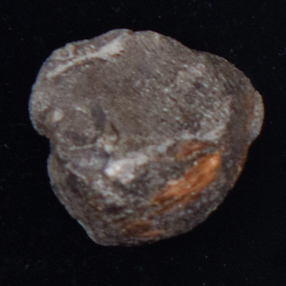Perspectives on the Boston Massacre
 On the evening of 5 March 1770, a confrontation between British soldiers and a boisterous crowd in front of the Custom House on King Street in Boston, Massachusetts had deadly results and the event quickly became known as the "Boston Massacre." In its aftermath, the commander of the 29th Regiment, Captain Thomas Preston, as well as the eight soldiers involved, were thrown in jail, while the five men who lost their lives became martyrs for the Patriot cause. In the days immediately following the event, the acting colonial governor, Thomas Hutchinson, struggled to maintain order, eventually electing to relocate the British troops, previously quartered in Boston, to Castle William (now Castle Island), a fortified island in Boston Harbor.
On the evening of 5 March 1770, a confrontation between British soldiers and a boisterous crowd in front of the Custom House on King Street in Boston, Massachusetts had deadly results and the event quickly became known as the "Boston Massacre." In its aftermath, the commander of the 29th Regiment, Captain Thomas Preston, as well as the eight soldiers involved, were thrown in jail, while the five men who lost their lives became martyrs for the Patriot cause. In the days immediately following the event, the acting colonial governor, Thomas Hutchinson, struggled to maintain order, eventually electing to relocate the British troops, previously quartered in Boston, to Castle William (now Castle Island), a fortified island in Boston Harbor.
 The event was witnessed and described by many, in both words and images. Newspapers summarized the incident and, as the legal process got underway, depositions were collected and recorded. Other printed items such as engravings and broadsides offered impressions of and opinions about the recent events. Handwritten letters and diary entries conveyed the thoughts and reactions of local people.
The event was witnessed and described by many, in both words and images. Newspapers summarized the incident and, as the legal process got underway, depositions were collected and recorded. Other printed items such as engravings and broadsides offered impressions of and opinions about the recent events. Handwritten letters and diary entries conveyed the thoughts and reactions of local people.
Eventually two trials (one for Captain Preston, the other for the eight British soldiers) were held in the fall of 1770, with John Adams and Josiah Quincy serving as defense attorneys for the soldiers and Samuel Quincy and Robert Treat Paine representing the “Relatives of the Deceased.” Even after the verdicts were announced - the Captain and six soldiers were acquitted, while two soldiers were found guilty of manslaughter - the reverberations of the Boston Massacre continued, including annual commemorations held by colonists as a way of supporting or furthering the Revolutionary cause.
 The collections of the Massachusetts Historical Society include newspaper accounts, broadsides, letters, diary entries, pamphlets, printed depositions, orations, trial notes, and even bullets (pictured right) recovered from the site, all relating to this significant event in America's early history. Have you ever read a newspaper account written in March 1770 describing what happened in Boston? Was the event a “Horrid Massacre” or an “Unhappy Disturbance”? Do written descriptions of "an awful scene" and "uproar and confusion" help you to understand what the atmosphere in Boston was like at the time and what issues were at stake? Many people are familiar with Paul Revere’s engraving, but have you examined Newburyport engraver John Mulliken's version of the image, or looked at a nineteenth century lithograph that depicts Crispus Attucks in the middle of the confrontation?
The collections of the Massachusetts Historical Society include newspaper accounts, broadsides, letters, diary entries, pamphlets, printed depositions, orations, trial notes, and even bullets (pictured right) recovered from the site, all relating to this significant event in America's early history. Have you ever read a newspaper account written in March 1770 describing what happened in Boston? Was the event a “Horrid Massacre” or an “Unhappy Disturbance”? Do written descriptions of "an awful scene" and "uproar and confusion" help you to understand what the atmosphere in Boston was like at the time and what issues were at stake? Many people are familiar with Paul Revere’s engraving, but have you examined Newburyport engraver John Mulliken's version of the image, or looked at a nineteenth century lithograph that depicts Crispus Attucks in the middle of the confrontation?
We invite you to read and examine materials offering a range of perspectives on this important event in our nation's history.
Funding from the Massachusetts Society of the Cincinnati supported this project.
Warning: file_put_contents(/var/www/html/features/juniper/cache/massacre--^var^www^html^^features^bbcms_templates^bostonmassacre^article^.cache): failed to open stream: Permission denied in /var/www/html/features/juniper/bbcms_class.php on line 268
